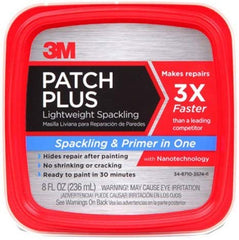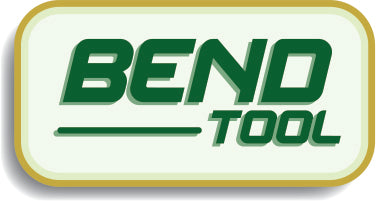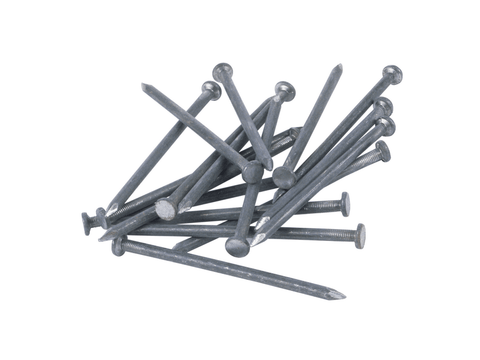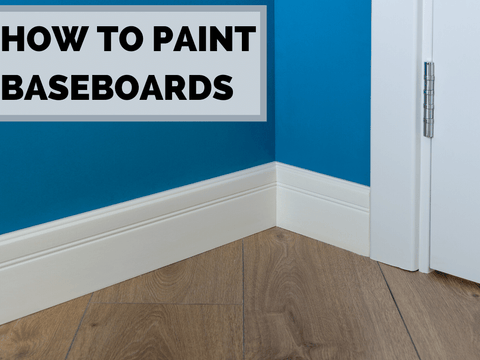1. How important is nailing baseboard trim?
Attaching your baseboards to the wall is a crucial step in the installation process. More often than not, this step is overlooked. Typically, we assume walls are straight, and our corners are at the intended angles. Unfortunately, this is not the case.Instead, when nailing the baseboards to the drywall, we discover how sturdy or inflexible they are. We start to realize the wall is bowed in places. We find out some of the odd angles we may have never noticed. As a result, we are dependent on a good job nailing in the baseboards to the wall to help ease the final steps and finish work for a great looking final product.
2. What is the best way to Nail Baseboards?
Unquestionably, the easiest and most effective way to nail in baseboards is with a nail gun. The question is, what type of nail gun do you need, and depending on your budget or other uses for a nail gun, that can get a little bit tricky.
For most of us, a finish (trim) nail gun is going to be ideal for installing baseboards. They have a great return on investment, they are relatively inexpensive (most range from $80-$200), they will last for years, and they can also be used for many other home improvement projects. If you aren’t up for buying one, ask around, you probably know someone who is willing to let you borrow theirs.
3. What type of nail gun is best for baseboards?
For our purposes, nail gun decisions will come down to two types: Finish Nailer or Brad Nailer for baseboards.
4. How do you nail baseboards to molding?

- With a nail gun, or
- Without a nail gun
Without a nail gun typically means using a hammer to install the baseboards. Nailing baseboards with a hammer is generally the same process; however you will be purchasing nails designed to be used with a hammer, and you will probably want to purchase several different sizes of nail sets to help insert the nail into the wall.
Your processes may change depending on setup and equipment, but generally speaking, they are as follows:
- Mark your studs. How far apart you should nail baseboard is dependent on the location of your studs. Using a stud finder, locate the studs along the wall on the path of the baseboard. It is easier to do this in advance. A simple method involves placing painter’s tape along each stud above the baseboard. Once you locate the first couple, you’ll have an idea of the distance between studs, and the process moves pretty fast.
-
Prep your gear:
- If you’re using a nail gun, you may need a compressor; some high-end guns do not require a compressor. If you’re using a cordless gun, make sure your battery is fully charged and ready for action.
- If you’re using a hammer, identify the right size nail set for your nails. You will want to transfer to the nailset as soon as possible to avoid dings and dents in the shape of your hammer on your baseboard.
- Start nailing. If you are using an air gun, follow manufacturers’ recommendations for PSI, nail sizes, and how to use. If you’re using a hammer, simply line up your nails with your studs, insert the nail and start hammering until the nail reaches its end. Use the nail set to get the nail beneath the baseboard so it can be filled and painted without a trace.
- Use two nails for baseboards 5 inches or less; anything over consider using three per stud.
- Don’t forget to account for base caps and shoe molding. You will want to be able to nail those securely without nails intersecting.
- Depending on the height of your baseboard and how it’s positioned, you may be able to use the bottom 2x4 to secure your nail as opposed to the stud. This is not recommended if you are using shoe molding or quarter round.
5. What size nails for baseboard (thickness and length)?
To keep things simple – let’s remember that the ‘d’ in the baseboard nail size refers to length (see chart below), while the gauge refers to the diameter – or how stout the nail is. Why does this matter? A long, skinny nail is most likely going to be resistant to denser or thicker forms of material, and especially problematic with any knots.
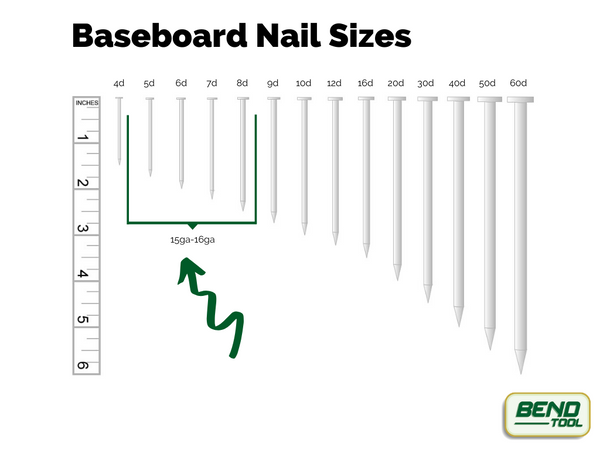
6. What gauge nails to use for baseboards?
Based on nail size, you should be looking for anything between 15 gauge and 18 gauge. With these gauges it you can easily find nails up to 2.5’’ long which is an ideal length for baseboard nails.7. What size nail should I use for baseboards?
As we discussed earlier with nail guns – the best baseboard nails are probably going to be 6d (2’’) or 8d (2.5’’ for baseboard). These can easily accommodate 15 gauge or 16 gauge nails, giving you a long, durable nail for thick baseboards and studs.8. What size brad nails for baseboards?
Brad nails are best used for basecaps and shoe molding. We recommend 15-gauge 2’’ nails. However, you may need to analyze your setup for what length is best. For instance, a 2’’ nail may work great for the shoe molding but run too far into the baseboard for the basecap, causing them to intersect and protrude out of the baseboard.9. How to fill nail holes in baseboards?
